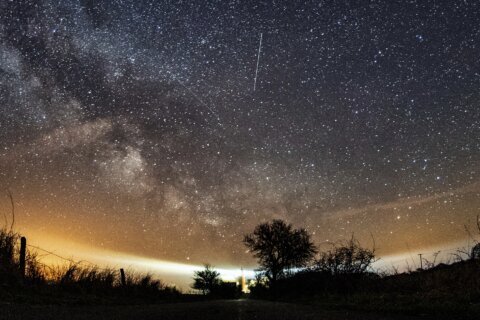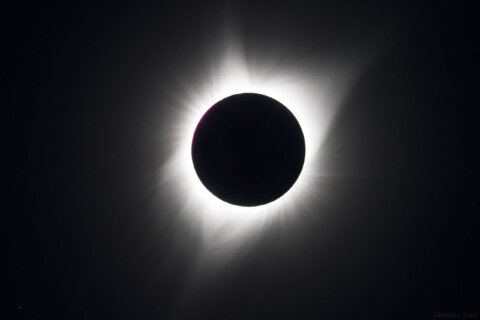CHARLOTTESVILLE, Va. — Ever seen “Old Faithful” or other smaller geysers erupt at Yellowstone National Park? It’s quite the sight.
Located on a small, ice covered moon around Saturn, there’s a continuous eruption of huge Yellowstone-like geysers that an intrepid spacecraft will fly through at very close range to further discern their secrets.
On Wednesday morning, the Cassini spacecraft, which has explored the Saturn system for more than 11 years, will perform its 21st flyby of Enceladus, the amazing ice covered moon with a global sub-surface ocean.
This daring flyby will be only 30 miles above the South Pole of Enceladus, and it will be the deepest penetration ever of the fascinating plumes that are located there. Closest approach will be at 11:22 a.m. EST.
The plumes of Enceladus, originally called fountains, were discovered in November 2005 and have been flown through before, but at a higher altitude. These earlier flybys showed that the plumes are made of ice, water vapor and organic molecules, and occur continuously only at the South Pole of Enceladus. This deeper plume penetration will allow for the best sampling ever of the particles and complex chemistry contained within.
The plumes are believed to be caused by Yellowstone-like eruptions originating from the global ocean and hydrothermal heat concentrated at the South Pole. The plumes might be erupting from the “Tiger Stripes” of Enceladus — fractures in the surface ice. The makeup and plume structure is one of the key science objectives of this flyby.
During a teleconference held Monday, scientists said Cassini will spend only a few tenths of a second flying through the plumes. But its instruments have been prepped and tuned specifically for this encounter.
They’re expected to gather data that’ll help answer a number of questions (including “is the Enceladus ocean habitable for simple life?”). The spacecraft can detect complex organic molecules but can’t determine if they are biological in nature.
Cassini will gather data and take pictures inbound and outbound of Enceladus. The North Pole is visible for the first time ever; the South Pole will be illuminated by the light of Saturn itself.
How bright will the South Pole be during the flyby?
“It will be much, much less than our own full moon,” said Linda Spilker, Cassini project scientist at the Jet Propulsion Laboratory. “Enceladus is very bright and we have done this before.”
Cassini will fly by so fast that it must take “smeared” pictures that software should be able to convert to regular view.
By Wednesday afternoon, the spacecraft is expected to do a call back followed by transmission of data and pictures. It will take a week to process the initial results, followed by weeks and months of analysis. We might see the first pictures by late Thursday or Friday morning.
This pioneering flyby is a first step in exploring other oceans in our solar system. Sniffing, probing and photographing the plumes of Enceladus will reveal much about its hidden global ocean. In turn, this may give us another place — in addition to Mars — to look for life.
Jupiter’s moon Europa also has a global liquid ocean and is a target for future exploration. The science and lessons learned by Cassini will go a long way in preparing for future exploration of Europa and Enceladus.
Cassini, described by the scientists as “a perfect mission,” has two years left. It will fly by Enceladus one more time in December, take high resolution pictures of the F-ring of Saturn, fly close to tiny ring moons, and in April 2017, hop across the entire ring system to fly in between a gap in the rings.
At its end, Cassini will do a death plunge into the atmosphere of Saturn and will have written the book on the ringed planet and its moons.
I’ll have updates on the flyby and Cassini as they become available.







